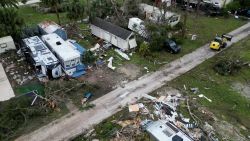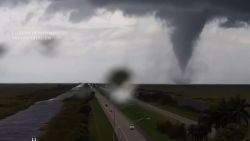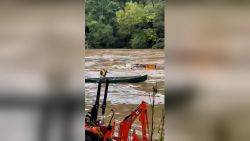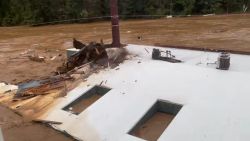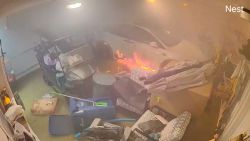At least two people have died as the result of the ongoing storms inundating California, and nearly 10,000 residents are under evacuation orders, officials said, as intense flooding threatens several coastal counties.
The powerful storms have delivered heavy rainfall across the central and northern parts of the state, prompting the Weather Prediction Center to issue a Level 4 of 4 warning of excessive rainfall in the area.
Meanwhile, the state of emergency declaration requested by Gov. Gavin Newsom Thursday night has been approved by President Joe Biden, clearing the way for financial help in responding to the storm’s onslaught and recovery, said Nancy Ward, director of the state’s Office of Emergency Services.
Some 25 million people are under flood alerts issued by the National Weather Service, and more than 25,000 are without electricity, according to PowerOutage.us.
Some isolated areas of the state have received more than a foot of rain, according to the National Weather Service, as the heaviest rain will shift south and lessen in intensity this evening and into the overnight hours. But rain will continue through the weekend and could lead to more flooding concerns.
As residents in many of California’s mountain communities remain trapped by snow from back-to-back winter storms, another significant atmospheric river event is expected to impact the region early next week.
The National Water Center said, “Multiple rounds of rainfall in addition to melting snow will result in the potential for significant rises along streams and rivers, with widespread flooding impacts possible through early next week.”
Two fatalities have been confirmed and approximately 9,400 residents are under evacuation orders, Ward said at a Friday news conference.
Flash flooding is expected to be a particular concern in California’s central coast to the Sierra Nevada foothills over the next six to eight hours, David Lawrence from the National Weather Service said. More than a dozen shelters have been opened in nine counties to house those forced from their homes, Ward added.
CalTrans, the state’s transportation department, has about 4,000 crew members working 12-hour shifts during this weather event, who are already removing downed trees and clearing drainage culverts to minimize flooding, deputy director John McKeever said. The California National Guard has deployed 36 high water vehicles to respond to rescues as well, added Cal Guard’s David Kauffman.
In Fresno County, three elderly women, including a 104-year-old, were rescued after being stranded in a house, Fresno County Sheriff John Zanoni said. By Friday afternoon, floodwaters in the county had “risen considerably” and an evacuation order was put in place for all residents, according to the sheriff’s office.
The worst rainfall and most significant impacts expected to persist through the day Friday. Hourly rainfall rates will steadily increase in intensity across California through Friday morning, potentially reaching 1 inch per hour.
Parts of the Sierra Nevada above 8,000 feet could get hit with 8 feet of snow. Creeks and streams in the foothills of the Sierra Nevada mountains remain the most vulnerable areas for flooding from rain and snowmelt, the Weather Prediction Center said.
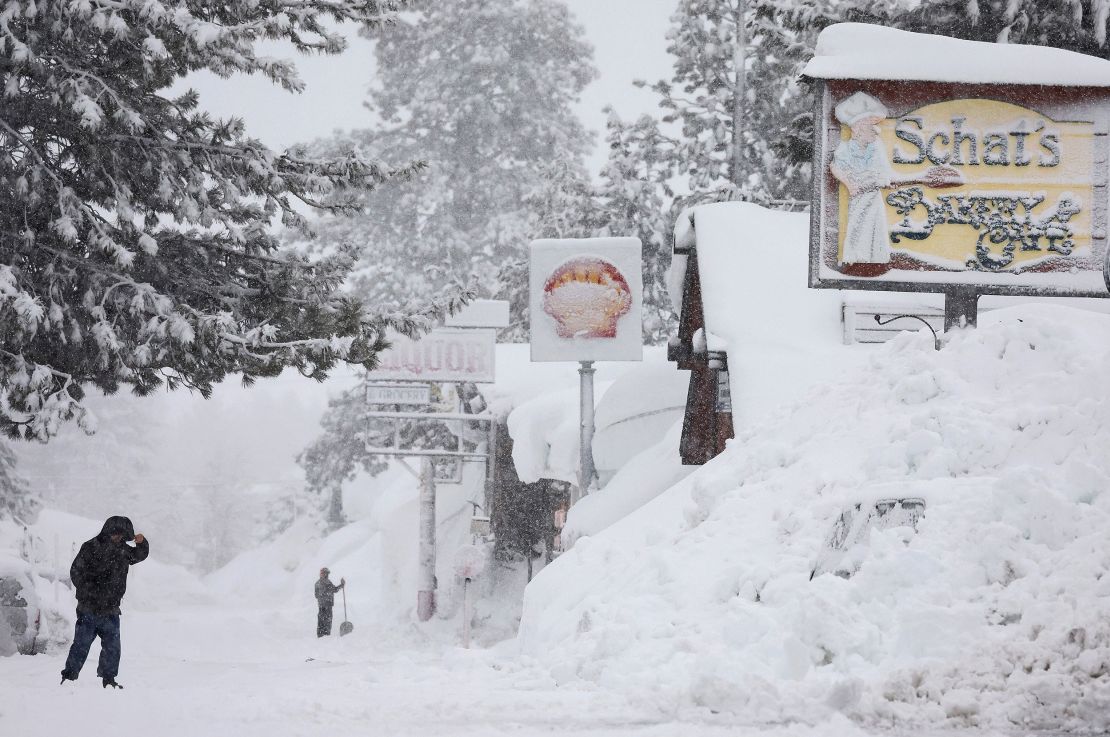
A separate system is also delivering snow to a large swath of the central US with winter weather alerts in place Friday from South Dakota to Connecticut. The storm has already tallied widespread snowfall totals between 2 and 5 inches, with an area along the Illinois-Wisconsin border getting between 6 and 8 inches.
In Minneapolis, up to 2 inches of snow could fall on top of the 2.1 inches already on the ground. And in Milwaukee, Wisconsin, about 4 inches of snow has already fallen with the possibility of another 5 inches coming today.
Heavy snow overnight across Wisconsin knocked out power to nearly 110,000 customers, according to PowerOutage.us, including about 89,000 in Milwaukee County.
California residents trapped, videos show raging floodwaters
As of Friday, 34 of California’s 58 counties are under a state of emergency issued by the governor’s office due to previous storms and this week’s severe weather threat. The state also activated its flood operations center Thursday morning.
A video captured by a Springville resident in Tulare County from his car on Friday showed rushing floodwater below a bridge striking a home.
“Not looking good in Springville,” Brian Duke captioned the video he posted on Facebook. “Authorities are evacuating everyone along the river. It’s getting worse by the minute.”
The Tulare County Sheriff’s Office said Friday evening it was receiving reports of widespread flooding, collapsed bridges, downed trees and separated roads, urging residents to take the storm seriously and heed officials’ orders.
About 700 residents in Soquel, California, located in Santa Cruz County, are trapped after a pipe failure led to intense flooding and collapse of the one road connecting the community to the rest of the region, Steve Wiesner, Santa Cruz County assistant public works director, told CNN.
Soquel resident Molly Watson shared a photo with CNN showing a large piece of road washed out by floodwaters in the town. Cracked pavement appears to sink into the rushing water as emergency crews stand on once piece of road and residents on the other.
“This is the one road that leads into town,” Watson said. “We are now an island.”
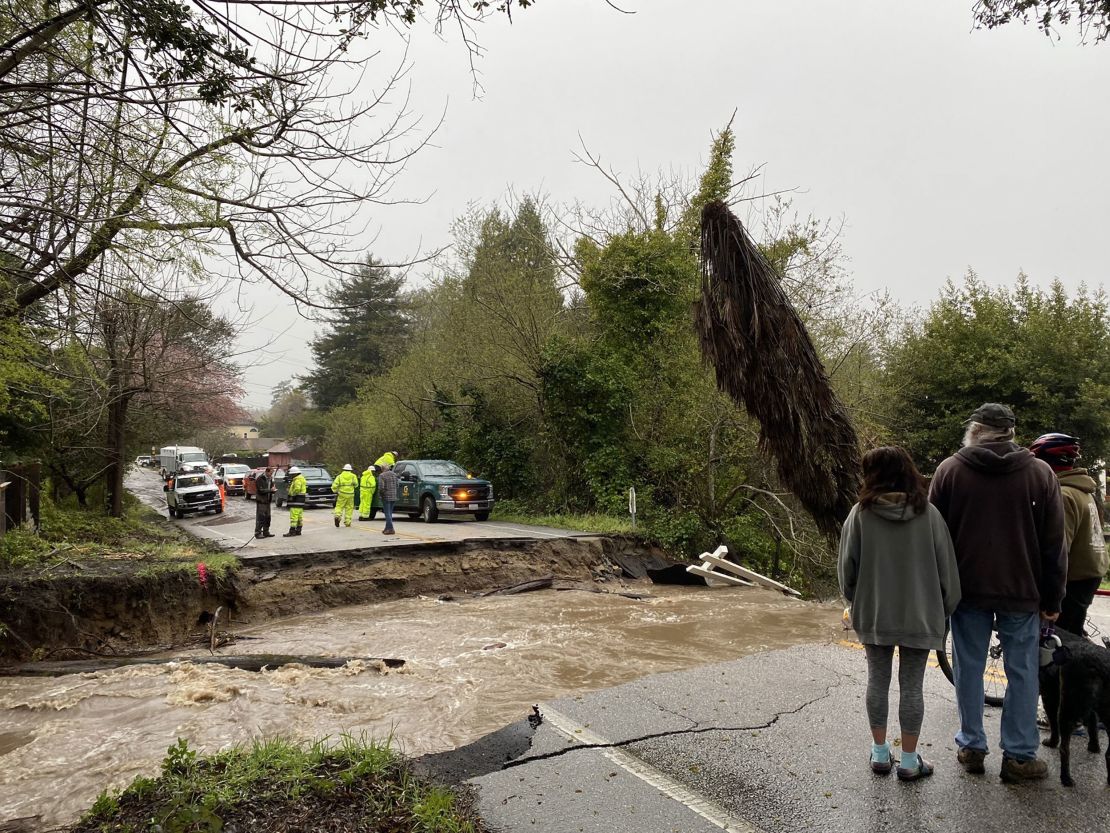
The residents will remain isolated until a new crossing can be prepared, which could take days, Wiesner said.
One person died and another was injured when a warehouse roof partially collapsed in Oakland Friday morning in what is likely a weather-related incident, a fire official said.
In the community of Felton also in Santa Cruz County, resident Tom Fredericks lamented the fatigue from the unrelenting series of severe storms since the start of the year.
“We’ve been working every week, every week when we can since then,” Fredericks told CNN affiliate KGO. “It’s just starting right now to feel like it was before the storms. So this is kind of discouraging to be facing it all over again.”
From late December into January, many areas across the state were inundated with torrential rain from atmospheric rivers that lasted for consecutive days. The rainfall caused deadly flooding, mudslides and damaged critical infrastructure that has not been yet repaired in some places, which elevates the potential danger associated with this week’s storm.
This week’s atmospheric rivers – which are long, narrow bands of moisture in the atmosphere that carry warm air and water vapor from the tropics – could possibly be even more threatening due to their warmth, forecasters have said.
Rainfall totals through Sunday morning could range from 1.5 to 3 inches for most urban areas with between 3 and 6 inches in the coast ranges and inland hills. Up to 8 inches over the Santa Cruz Mountains and locally up to 12 inches over favored peaks and higher terrain of the Santa Lucia Mountains.
The looming forecast led some ski resorts to announce closings. Kirkwood Mountain Resort said it would not open Friday, as did the Northstar California Resort and the Heavenly Resort in South Lake Tahoe, on Nevada’s border with central California.
CNN Meteorologist Robert Shackelford and CNN’s Taylor Romine and Rebekah Riess contributed to this report.







